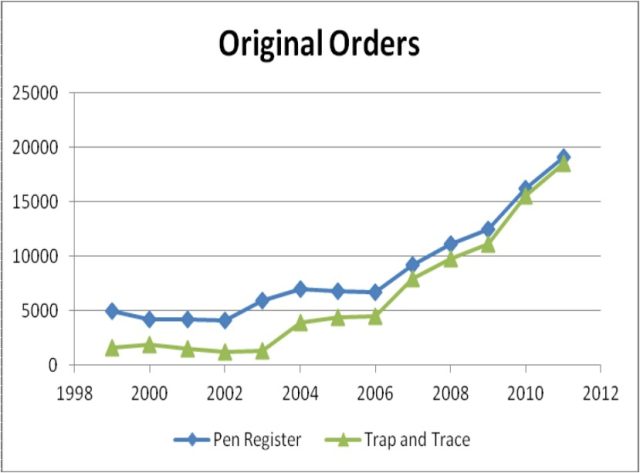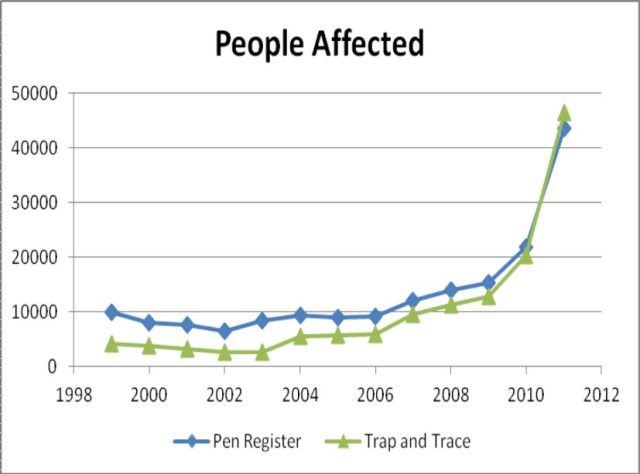Timothy B. Lee, ARS |
Statistics obtained by the American Civil Liberties Union provides additional evidence that government surveillance of Americans has skyrocketed in recent years. The government is legally obligated to release reports about its surveillance activities, but it refused to do so until the ACLU sued to compel the production of the documents.
The reports concern what lawyers call “pen register” and “trap and trace” records. These terms originally referred to hardware devices law enforcement could attach to the phone network to capture information about (but not the contents of) phone calls. Pen registers recorded outgoing phone numbers. Trap and trace devices recorded incoming phone numbers.
Today’s telephone networks have the ability to capture this information without any special equipment. And the government has expanded the concept to include other forms of communication such as email.
The legal standard for conducting this kind of non-content surveillance is less stringent than the rules for conducting a wiretap. To get a wiretap order, the government must convince a judge that it is essential to an investigation, but pen registers must merely be “relevant” to an investigation to obtain the approval of a judge.
The statistics uncovered by the ACLU show a striking increase in the frequency of government surveillance. Here is the number of orders issued by the government over the last 12 years:

And here is the number of people affected by those orders:

As the ACLU’s Naomi Gilens points out, “more people were subjected to pen register and trap and trace surveillance in the past two years than in the entire previous decade.”
The new statistics also show a large spike in Internet surveillance:

While the growth rate for Internet surveillance is high, such surveillance still accounts for a tiny fraction of pen register and trap-and-trace orders overall. In 2011, only about 800 of each type of order was issued for Internet traffic, compared to almost 20,000 of each type of order for telephones.
While it’s useful for the public to have these statistics, they give just one small piece of the overall surveillance puzzle. For example, these statistics likely don’t include cell phone location tracking by law enforcement. They also omit government access to emails stored by third party providers. And they entirely exclude the National Security Agency’s warrantless wiretapping program under the FISA Amendment Act. While hard numbers are hard to obtain, what little evidence we do have suggests that all of these forms of surveillance have been increasing.
Why is the government spying on us so much more than it did just a decade ago? The terrorist attacks on September 11, 2001 were surely one motivating factor. But it can hardly explain the sharp increase in the last two years. Another important factor is likely just supply and demand. As information technology in general has gotten cheaper and more powerful, the technology to capture and store large amounts of intercepted data has also gotten cheaper. So economic constraints that limited the amount of data the government could collect in the past has become less and less of a constraint.






